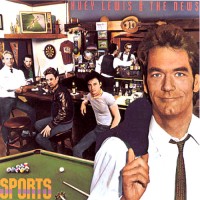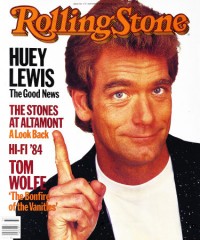RELATED: Huey Lewis and the News joined that rarefied strata 30 years ago with SPORTS, the group’s third album — a 10-times-platinum, chart-topping smash that spawned five Top 20 singles, four of which (“Heart and Soul,” “I Want a New Drug,” “The Heart of Rock & Roll,” “If This Is It”) went Top 10 on the Billboard Hot 100. The slyly humorous SPORTS videos were MTV staples. It was a phenomenon that took the San Francisco Bay Area group, which just the year before was defiantly “Workin’ For a Livin’ ” and fighting with its record company, and established it as a global powerhouse, a proud representative of the genuine heart of rock ‘n’ roll that has continued to beat strong over the subsequent three decades.
“It was neat. It really was,” Lewis recalls now. “We had been at it for awhile, all of us. We were not spring chickens. I was 33 years old. My message to the boys was, ‘Enjoy this. This is as good as it gets right now. Everybody is rooting for us, and it’s going to get pretty crazy.’ And it did. But we knew it was coming we enjoyed the whole thing.”
As Lewis notes, he and the News were hardly an unknown commodity at the time of the SPORTS explosion. The six musicians had already worked in groups such as Clover, Soundhole and Sly & the Family Stone, as well as with Elvis Costello and Van Morrison’s bands before the News (first christened the American Express) formed in 1979. The next step was obvious. “We needed hits, big hits,” Lewis explains. “In the 80s, the way radio and then MTV were programmed, if you didn’t have a hit record you weren’t going to be able to make more records. That was it, period. It was the one avenue to success. There was no Internet, no social media, none of that stuff. So the priority was to have hits. We were just covering our asses, trying to write as many hits as we could.” MORE
RELATED: “Ooooh, man, I can’t wait to see Huey!” said my client Sean, busily brushing his hair. I work with Sean in a day program for people with developmental disabilities. In addition to some mental retardation, he has severe obsessive-compulsive disorder. He’s a hand-washer and a germphobe, and he looks exactly like a grown-up version of Harold from Harold and the Purple Crayon. He literally has three hairs on his head, which he brushes obsessively in between visits to the beauty college. He goes there for a free cut when things start to get “shaggy.” Part of his disability is that he has to have three of everything — three water bottles for work, three hats, three nail clippers, three hairs (I guess). So of course he has a big-ass stack of Huey Lewis CDs and tapes, three of each one.
 “Man,” he continued, “I’m gonna dance, dance, dance!” When Sean says he’s gonna dance, he means he’s gonna dance. I once saw him at a ’50s party, dressed like Kenickie from Grease (sans hair, natch), kicking up dust for over two solid hours. He knows a lot about music, and I call him the “human jukebox” because he can name that tune in about three seconds when we have the radio on in the car. His hands-down favorite performer is Huey Lewis.
“Man,” he continued, “I’m gonna dance, dance, dance!” When Sean says he’s gonna dance, he means he’s gonna dance. I once saw him at a ’50s party, dressed like Kenickie from Grease (sans hair, natch), kicking up dust for over two solid hours. He knows a lot about music, and I call him the “human jukebox” because he can name that tune in about three seconds when we have the radio on in the car. His hands-down favorite performer is Huey Lewis.
Sean has a framed picture of himself and Mr. Lewis locked in an embrace. At first I thought it was cool that he had met the singer and was lucky enough to snap a photo. Then, as I visited other clients’ houses, a pattern started to emerge. Rose, Jennifer, Linnea, Donald (whose names, like everyone else’s in this story, have been changed to protect their anonymity) — each had a picture of him- or herself posing with Huey Lewis or at a Huey concert. Was Huey Lewis the Pied Piper of the developmentally disabled, only with a harmonica instead of a fife? (How else to explain all those sales of Sports?) Whatever the reason — the catchy tunes, the goofball charisma, or maybe those slapstick videos — developmentally disabled people see something significant and tender in Huey Lewis. He makes them happy. MORE
